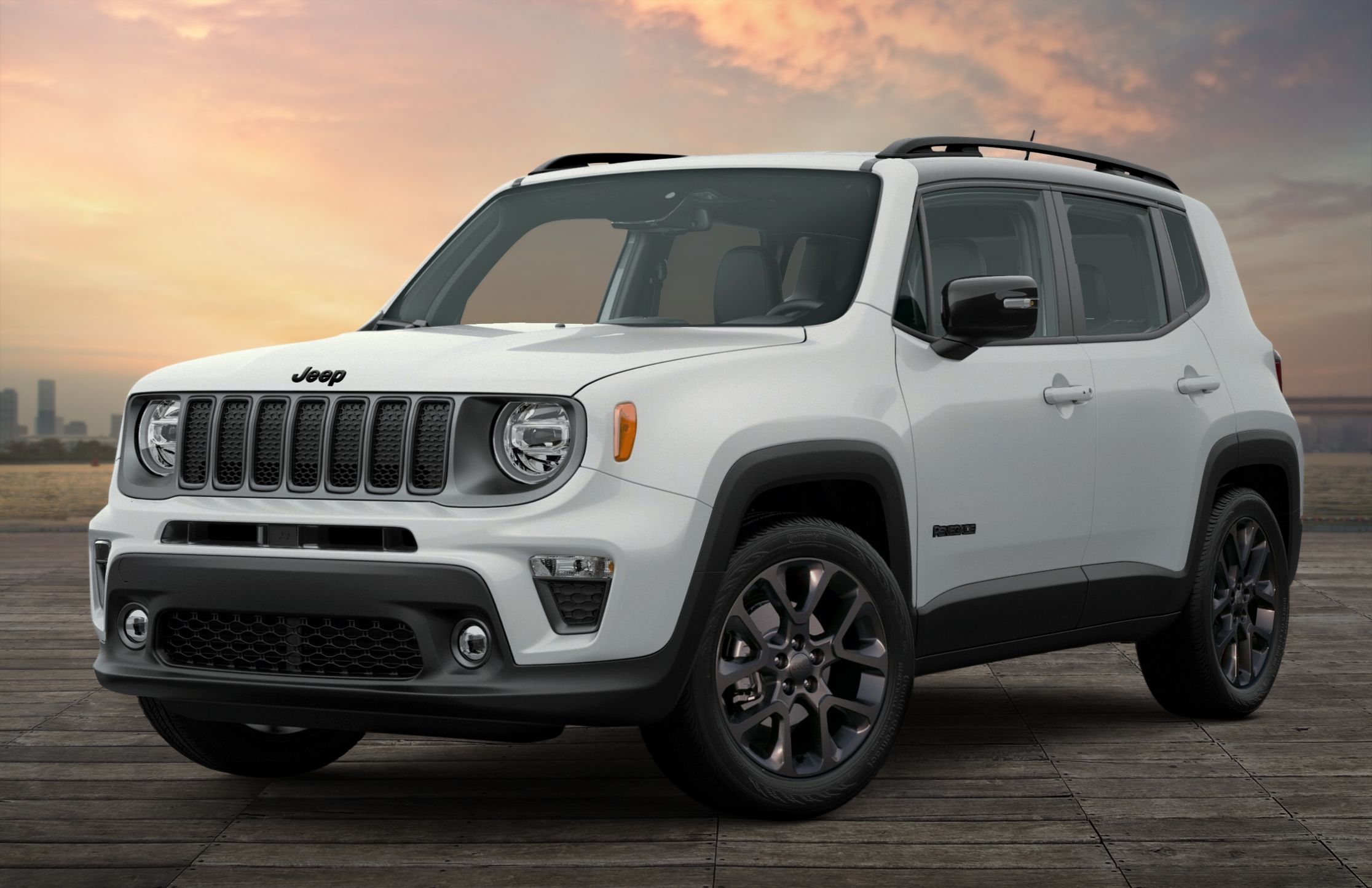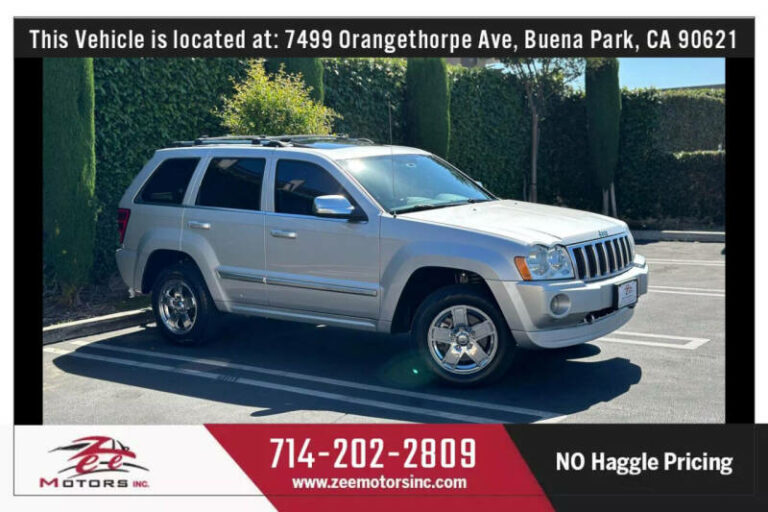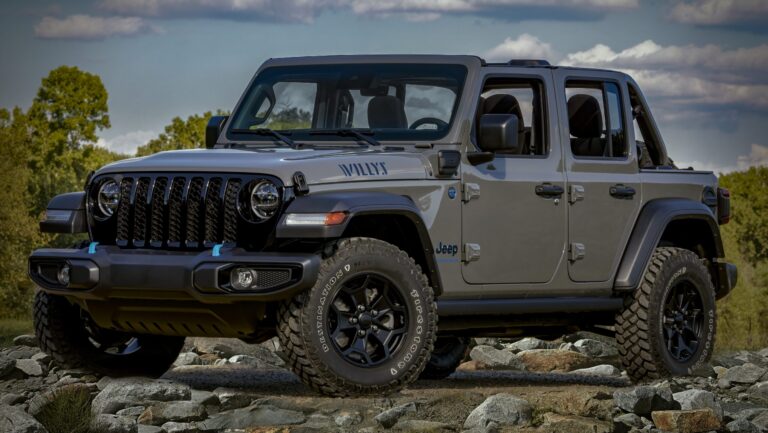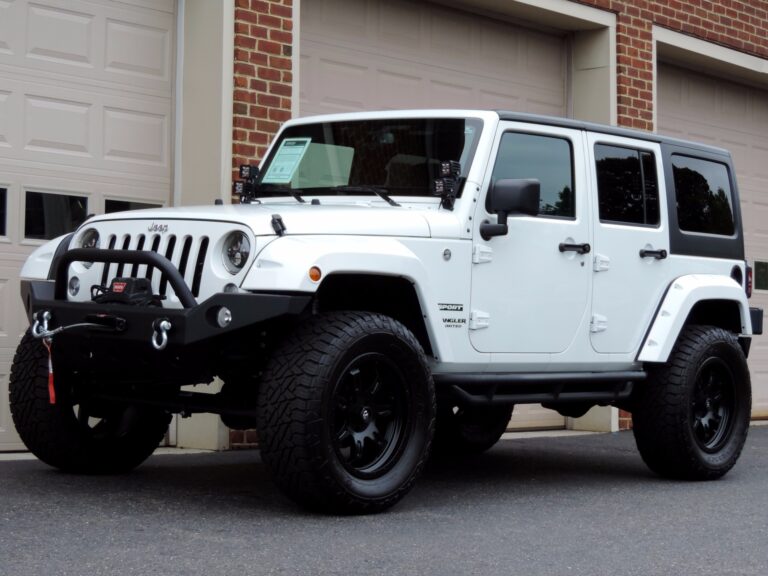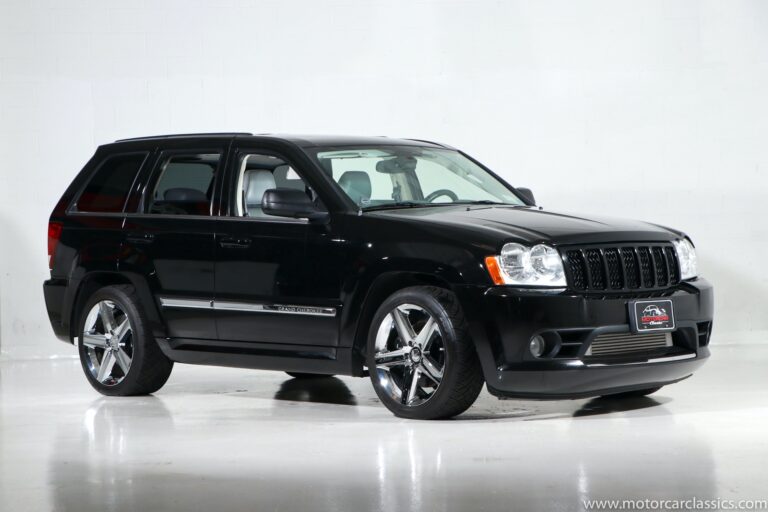Jeep Dana 44 For Sale: Your Ultimate Guide to an Off-Road Powerhouse Upgrade
Jeep Dana 44 For Sale: Your Ultimate Guide to an Off-Road Powerhouse Upgrade jeeps.truckstrend.com
For any serious Jeep enthusiast, the term "Dana 44" often elicits a knowing nod and a spark of desire. It represents a significant upgrade in strength, durability, and off-road capability, making it one of the most sought-after components in the aftermarket world. If you’re looking to push your Jeep further on the trails, conquer more challenging obstacles, or simply build a more robust rig, finding a Jeep Dana 44 For Sale is likely high on your priority list.
This comprehensive guide will delve into everything you need to know about purchasing a Dana 44 axle for your Jeep. From understanding its inherent advantages to navigating the various types available, critical considerations, and where to find the best deals, we’ll equip you with the knowledge to make an informed decision and confidently embark on your axle upgrade journey.
Jeep Dana 44 For Sale: Your Ultimate Guide to an Off-Road Powerhouse Upgrade
Why the Dana 44? Understanding Its Unmatched Appeal
The Dana 44 axle has earned its legendary status in the off-road community for very good reasons. Compared to the lighter-duty Dana 30 (often found in the front of many Jeeps) and especially the notorious Dana 35 (a common rear axle in older Jeeps), the Dana 44 offers a substantial leap in robust construction and performance.
Key Advantages:
- Superior Strength: The Dana 44 boasts a larger ring gear (8.5 inches vs. 7.125 inches for the Dana 30 and 7.56 inches for the Dana 35) and typically stronger axle tubes and shafts. This increased beefiness makes it far less prone to bending or breaking under the stress of larger tires, lower gearing, and aggressive off-road maneuvers.
- Enhanced Durability: Designed to handle more torque and impact, the Dana 44 is a workhorse that stands up to the rigors of rock crawling, mud bogging, and high-speed trail runs where lesser axles might fail.
- Versatility for Upgrades: The Dana 44 is a popular platform for aftermarket modifications. It readily accepts a wide range of gear ratios, various locking differentials (lockers), and stronger chromoly axle shafts, allowing for extensive customization to match specific build goals and trail demands.
- Wider Compatibility: While not a direct bolt-in for every Jeep, the Dana 44 came as original equipment in several desirable models (e.g., TJ Rubicon, JK Sport/Sahara rear, JK Rubicon front and rear), making factory take-offs a viable option. Its widespread use also means abundant aftermarket support.

For anyone running tires 35 inches or larger, or those frequently tackling challenging terrain, upgrading to a Dana 44 (or a pair of them) is often considered a fundamental and necessary step to prevent costly trail breakages and unlock true off-road potential.
Types of Jeep Dana 44 Axles For Sale
When searching for a Jeep Dana 44 For Sale, you’ll primarily encounter three categories, each with its own set of pros and cons:
-
OEM Pull-Outs (Used Axles):
These are axles removed from stock Jeeps. They represent the most common and often most affordable option.- TJ Rubicon Dana 44s: Highly sought after for TJs and LJs, these came with factory air lockers and typically 4.10 gearing. The front is a high-pinion Dana 44, which is particularly desirable.
- JK Dana 44s:
- JK Rubicon: These came with front and rear Dana 44s, often with electric lockers (e-lockers) and 3.73 or 4.10 gearing. They are wider than TJ axles and have a 5×5 bolt pattern.
- JK Sport/Sahara Rear Dana 44: Many non-Rubicon JKs came with a rear Dana 44 but a front Dana 30. These rear axles are a good upgrade for Sport/Sahara owners but lack a factory locker.
- Older Jeeps (CJ, YJ, XJ): Some older models (e.g., certain XJ Cherokees, CJs, YJs) came with rear Dana 44s. These are typically narrower and may require more fabrication for modern Jeep swaps but can be a budget-friendly option for specific builds.
- Considerations: Condition varies wildly. Inspect for bent tubes, damaged housing, worn gears, or issues with factory lockers. Often require new seals, bearings, and potentially new shafts or U-joints.
-
Aftermarket Crate Axles (New):
These are brand-new, purpose-built axles from renowned manufacturers like Dynatrac, Currie Enterprises, G2 Axle & Gear, TeraFlex, and more.- Benefits: Superior strength (often with thicker tubes, reinforced housings, and stronger internals), customizability (you choose width, bolt pattern, gear ratio, and locker), direct bolt-in for specific Jeep models, and a warranty.
- Drawbacks: Significantly higher cost compared to used OEM axles.
- Ideal For: High-performance builds, those seeking maximum strength and reliability, or when a specific custom width/setup is required.
-
Rebuilt/Refurbished Axles:
These are used OEM axles that have been professionally rebuilt with new internal components (bearings, seals, sometimes gears or lockers).- Benefits: Often a good middle-ground in terms of price and reliability. You get a refreshed axle without the full cost of a new crate unit. May come with a limited warranty from the rebuilder.
- Considerations: Quality depends on the rebuilder. Ensure they are reputable and transparent about what was replaced or inspected.
Where to Find Your Jeep Dana 44 For Sale
Finding the right Dana 44 requires knowing where to look:
- Online Marketplaces: Craigslist, Facebook Marketplace, and dedicated Jeep buy/sell/trade groups are prime hunting grounds for used OEM pull-outs. Be prepared to travel for pickup.
- Jeep Forums & Classifieds: Websites like JL Wrangler Forums, JK-Forum, Pirate4x4 (for more extreme builds), and local off-road club forums often have members selling take-off axles.
- Salvage Yards & Auto Recyclers: Search online databases like Car-Part.com or call local junkyards. They sometimes list complete axle assemblies.
- Specialized Off-Road Shops: Many 4×4 shops sell new aftermarket crate axles. Some also deal in used OEM take-offs from customer upgrades.
- eBay: Can be a good source for both used and new axles, but shipping costs for heavy items can be substantial.
- Jeep Swap Meets & Events: A great place to inspect axles in person and negotiate prices directly.
Key Considerations When Buying a Dana 44
Purchasing an axle is a significant investment. Keep these critical factors in mind to ensure you get the right Dana 44 for your needs:
-
Your Jeep Application (Front vs. Rear, Model Specificity):
- Front vs. Rear: Front Dana 44s have steering knuckles, C-knuckles, and different mounting points. Rear Dana 44s have drum or disc brake mounts and no steering components.
- Width: TJ/LJ axles are narrower than JK axles. Putting a wide JK axle on a narrow TJ might cause tire clearance issues or require significant fender modification. Conversely, a narrow TJ axle on a JK will look odd and might affect stability.
- Bolt Pattern: TJs, YJs, XJs use a 5×4.5" bolt pattern. JKs, JLU, and Gladiators use a 5×5" bolt pattern. You’ll need to match this or plan for wheel spacers/adapters.
- High Pinion vs. Low Pinion: Front Dana 44s from TJ Rubicons and some older Ford/Dodge trucks are "high-pinion," meaning the pinion gear enters the differential higher on the ring gear. This provides better driveshaft angles for lifted Jeeps and generally stronger gear tooth engagement under forward load. Most rear Dana 44s are low-pinion. For a front axle, high-pinion is generally preferred.
-
Gear Ratio:
Does the axle’s gear ratio (e.g., 3.73, 4.10, 4.56) match your existing axle, or your planned build? If you’re only replacing one axle, you must re-gear both axles to the same ratio, or your transfer case will bind and break. -
Locker Status:
Is it an open differential, a limited-slip differential (LSD), or a full locker? Factory Rubicon Dana 44s come with electric (JK) or air (TJ) lockers. Unlocked axles will require an aftermarket locker if you want true traction. -
Condition (for Used Axles):
- Housing: Check for bent tubes (often indicated by uneven tire wear or difficulty aligning), cracks, or severe rust.
- Differential Cover: Look for leaks or signs of heavy impact.
- Axle Shafts: Inspect the splines for wear and U-joints (on front axles) for play.
- Bearings and Seals: Assume these will need replacement unless explicitly stated they are new.
- Brakes: Will likely need new pads, rotors/drums, and potentially calipers/wheel cylinders.
- Gears: If possible, remove the cover and inspect the ring and pinion teeth for chipping, pitting, or excessive wear. Check for proper backlash.
-
Price vs. Value:
A cheap axle might seem like a bargain, but if it needs a full rebuild (gears, locker, shafts, bearings, seals), the cost can quickly exceed that of a better-conditioned used unit or even approach a new aftermarket axle. Factor in potential rebuild costs when evaluating a used Dana 44. -
Shipping & Logistics:
Axles are heavy and bulky. Factor in freight shipping costs or plan for local pickup with an appropriate vehicle.
Installation and Potential Challenges
Swapping axles is not a beginner-level DIY project. It requires significant mechanical aptitude, specialized tools (jack stands, floor jack, wrenches, possibly a welder), and the ability to work with suspension, steering, and brake components.
Potential Challenges:
- Compatibility: As mentioned, ensuring the axle’s width, bolt pattern, and mounting points match your Jeep is crucial. Swapping a JK axle into a TJ, for example, requires significant fabrication (new control arm mounts, track bar mounts, shock mounts, spring perches, and possibly shortening the axle).
- Gearing: If you buy an axle with a different gear ratio, you must re-gear your other axle. This is a precise job best left to a professional if you don’t have experience setting gear backlash and pattern.
- Brake Systems: You’ll need to connect the new axle’s brake lines and potentially adapt your existing brake system (e.g., going from drum to disc, or matching different caliper types).
- Driveshafts: The new axle might require a different driveshaft length or U-joint size.
- Fluid & Bleeding: Don’t forget to fill the differential with the correct gear oil and bleed the brakes thoroughly after installation.
Estimated Price Guide for Jeep Dana 44 Axles
Prices can fluctuate based on condition, location, inclusion of lockers/gears, and market demand. This table provides a general range:
| Axle Type / Condition | Typical Price Range (USD) | Notes / What to Expect |
|---|---|---|
| Used OEM Pull-Outs | ||
| JK Rear Dana 44 (Sport/Sahara) | $400 – $800 | No locker, varying gear ratios. Good value for a rear upgrade. May need bearings/seals. |
| JK Rubicon Rear Dana 44 | $800 – $1,500 | Includes electric locker, often 3.73 or 4.10 gears. Check locker function. |
| JK Rubicon Front Dana 44 | $1,000 – $2,000 | Includes electric locker, often 3.73 or 4.10 gears. Higher demand due to being a front HP44. |
| TJ Rubicon Rear Dana 44 | $800 – $1,300 | Includes air locker, often 4.10 gears. Very desirable for TJs. |
| TJ Rubicon Front Dana 44 (High Pinion) | $1,200 – $2,500 | Includes air locker, often 4.10 gears. Extremely high demand for TJs, LJs, and custom builds. Prices vary greatly with condition. |
| Older Jeep Dana 44 (CJ, YJ, XJ Rear) | $200 – $600 | Narrower. May require more fabrication for modern Jeep swaps. Often need full rebuild. |
| Rebuilt/Refurbished Axles | ||
| Professionally Rebuilt OEM Dana 44 | $1,500 – $3,000 | Price depends on what’s included (new gears, locker, shafts, paint). Comes ready to install, often with a limited warranty. |
| New Aftermarket Crate Axles | ||
| Entry-Level Aftermarket Dana 44 | $3,000 – $5,000 | Brands like G2, TeraFlex. Often stronger than OEM, customizable. May not include all components (e.g., brakes). |
| Premium Aftermarket Dana 44 (e.g., Dynatrac, Currie) | $5,000 – $10,000+ | Top-tier strength, fully customized to your specs, direct bolt-in, often includes high-end components. For serious builders. Price can go much higher for full custom setups. |
Note: These are estimates. Prices can vary significantly based on the axle’s specific condition, included components (lockers, gears, shafts, brakes), seller, and market demand.
Conclusion: Powering Your Adventure with a Dana 44
Investing in a Jeep Dana 44 axle, whether a carefully selected used unit or a brand-new aftermarket powerhouse, is a transformative upgrade for any serious off-roader. It’s about more than just adding beef; it’s about building confidence in your rig, minimizing trailside repairs, and unlocking the capability to tackle terrains you once only dreamed of.
Take your time, do your research, and don’t hesitate to ask questions. Inspect used axles thoroughly, understand what you’re buying, and factor in potential additional costs for installation or refurbishment. With the right Dana 44 under your Jeep, you’ll be well on your way to experiencing the true potential of your off-road machine. Happy trails!
Frequently Asked Questions (FAQ) about Jeep Dana 44 For Sale
Q1: Can I just swap a JK Dana 44 into my TJ?
A1: Not directly. While both are Dana 44s, JK axles are significantly wider than TJ axles (about 5-6 inches wider per side). They also have different mounting points for control arms, track bars, shocks, and spring perches, and a different bolt pattern (5×5" for JK vs. 5×4.5" for TJ). A JK Dana 44 can be installed in a TJ, but it requires extensive fabrication (cutting off all brackets and welding on new ones, potentially shortening the axle tubes) and will push your tires out considerably, often requiring massive fender flares or high-clearance fenders.
Q2: What’s the main difference between a Dana 44 and a Dana 30/35?
A2: The primary difference lies in strength and durability. The Dana 44 has a larger ring gear (8.5 inches vs. 7.125 inches for Dana 30, 7.56 inches for Dana 35), larger axle shafts, and typically a stronger housing. This allows it to handle larger tires, lower gear ratios, and more aggressive off-roading without breaking.
Q3: Should I buy a high-pinion or low-pinion front Dana 44?
A3: For a front axle, a high-pinion Dana 44 (like those found in TJ Rubicons or older Ford F-150s/Broncos) is generally preferred. The higher pinion position improves driveshaft angles on lifted Jeeps, reducing stress on U-joints and providing better ground clearance for the driveshaft. It also offers stronger gear tooth engagement under forward propulsion. Low-pinion axles are typically found in the rear.
Q4: How do I tell if an axle is a Dana 44?
A4:
- Differential Cover: The Dana 44 has a distinctive "stop sign" or octagon-shaped differential cover with 10 bolts. The Dana 30 has a round cover with 10 bolts, and the Dana 35 has an oval-shaped cover with 10 bolts.
- Casting Numbers: Look for "44" cast into the housing or on a metal tag attached to the differential cover bolts.
- Axle Tube Diameter: Dana 44 tubes are typically larger in diameter than Dana 30/35 tubes.
- Ring Gear Size: If the cover is off, measure the ring gear; 8.5 inches indicates a Dana 44.
Q5: Is it worth buying a used Dana 44, or should I save for a new aftermarket one?
A5: It depends on your budget, mechanical skills, and build goals. A used OEM Dana 44 can be a fantastic value, especially if it’s in good condition or you’re comfortable rebuilding it yourself. However, always factor in potential costs for new bearings, seals, brakes, and potentially a re-gear or locker. For extreme builds, competitive rock crawling, or if you simply want the strongest, most reliable option from the start, a new aftermarket crate axle is often worth the higher price.
